Industrial Works Dragline
Here’s one of the largest pieces of vintage machinery we’ve ever documented. A big-boy, a giant metal monster from the 1920s, a steam driven Industrial Works Company dragline that long ago toiled away in a southern Alberta coal mine. Rescued from an uncertain future not that long ago, it’s today in the hands of a collector, a very serious collector of old equipment, with the hopes of it being restored to working condition. What? Really? Wow…now that’s some kind of crazy ambition!
He’s a hell of a mechanic, so if anyone can do it…
Also seen in this report is an old truck mounted shovel sitting nearby, and a few other bits and pieces that this person owns (we told you, he’s no amateur). He’s got a lot of stuff – ooooh we’re kids in a playground – all of it very nice, which hopefully we can explore in greater detail at some later date. We really need to focus on today’s subject or risk total distraction. Ideally, we’d need several days to explore what he has. It’s that extensive!
Carrying serial #4858, the dragline (more on what exactly that is in a moment), was out-shopped from the Industrial Works plant in Bay City Michigan in 1926. Resting upon two huge crawler tracks, it’s relatively small by dragline standards (they can be some of the largest land machines ever made) but is still quite impressive in size. A coal fired boiler made steam which powered the beast. Smoke belching, steam vapour, all that noise, all that smell, gears and cogs and cables in motion, what it must have been to see it operation!
Who originally purchased the dragline and their location is not known. We searched and searched some more and came up short, but will continue looking. We tracked down some Industrial Works records, but none held what we needed.
Sometime in the mid-1950s, it was brought in from the States (the Detroit Michigan region was mentioned – the person behind it, I guess, was connected to that area in some way) to Bow Island Alberta to work at a surface coal mine to be established there. It was brought in by flat deck, no easy task given it’s huge size and the lesser abilities of trucks back in the day, to a point just north of town where it’s suggested the gravel roads became too soft to support the heavy load.
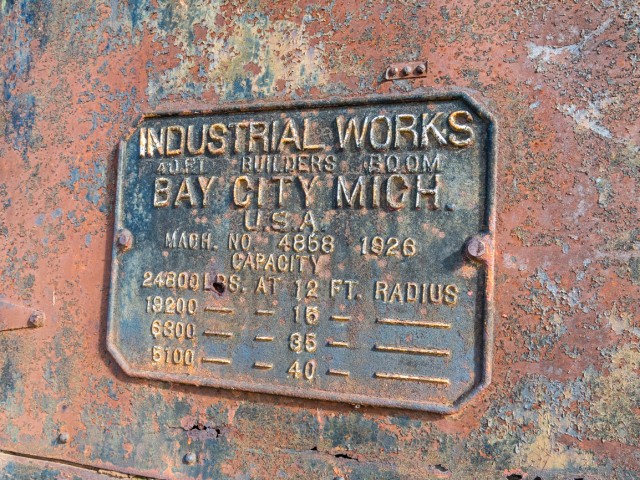
The maker’s plate.
The final stretch it moved under its own power. Even given its large size, the wide tracks helped spread the weight around. Old timers mention this final move becoming an event of sorts with many people showing up to watch it chug down the road, making its way, ever so slowly, to the mine site near the South Saskatchewan River.
The mine, known as the Red Parrot, was small and short lived and was only in production from 1955-1959. Output was only about 1000 tons. Mention is made of the coal being shipped out by rail to points east. It was the only surface mine the in the immediate area – most were underground operations. The seam mined was only a metre and a half thick and perhaps ten to fifteen metres deep. Easy diggings, but a rather thin bed by coal standards.
After the mine closed, the dragline was simply abandoned on site and there is sat for many, many years, rusting away. Some parts were stripped from it over time. The current landowner mentions spare parts are still scattered about, and even under the land where it sat for all those years (bits were buried to get rid of them).
In the 1990s the machine was picked up by a collector in Medicine Hat Alberta. Mention was made of a museum group wanting or being offered the machine, but things are a bit cloudy in respects to that. The old timers spoken with suggest the person that acquired it, himself, wanted it as a show piece for his own machinery museum that he hoped to establish (I guess he had collection of sorts). Either way, it sat at his yard for sometime, untouched I guess, before being acquired by the current owner a couple years back. It was no easy sale from what I understand since the previous owner was reluctant to part with it.
Mechanically the dragline is fairly complete and quite sound, save for some bad corrosion in the coal box and sheet metal near it and some bullet holes to patch up. Its remarkably good condition overall suggests it was little used since new or that it was very well kept over the years. Its owner, extremely proficient at fixing on old machinery by the way, hopes to start work on it soon. Finger’s crossed that he’ll invite us back as work progresses.
The boom and two buckets lie beside the machine – they’ll get added last. The old Industrial Works logo, very faint, can be seen on the back of the cab body. Looking inside, I’m amazed at how little there is in the way of operator comforts, or even safety. There is all manner of moving equipment within inches of his position.
The company that made this machine…
Industrial Works, Bay City Michigan recall, was founded in the 1870s and over the years manufactured all manner of cranes. An old catalogue lists the following types produced by the firm: rail, traction and crawling tractor cranes, locomotive cranes, wrecking cranes, wharf, barge and gantry cranes, transfer and pillar cranes, railway pile drivers, combination crane/pile drivers, portable rail saws, transfer tables. Pretty extensive line. Much of their output however, based on what we found, was railway mounted cranes.
A big player in the market, they merged with a rival in the early 1930s, becoming Industrial Brownhoist in the process. That company, in various incarnations, continued to operate into the early 1980s. Some parts of the plant stood until recently.
Interestingly draglines are not mentioned in the list of machines being offered by the Industrial Works firm two paragraphs above. Hmm, that means their output was small (in fact we could not find one verifiable record of any being produced, but info is spotty at best) or, and this was brought up by one person connected to the machine, that it may have been a regular lifting crane modified to be a dragline – an interesting possibility. It could be done from what I understand with the addition of a winding drum and attendant cable to pull the bucket as it dug. Regardless of how it became to being, it’s a rare one indeed. The maker’s plate, still attached to the machine, does nothing to confirm either possibility.
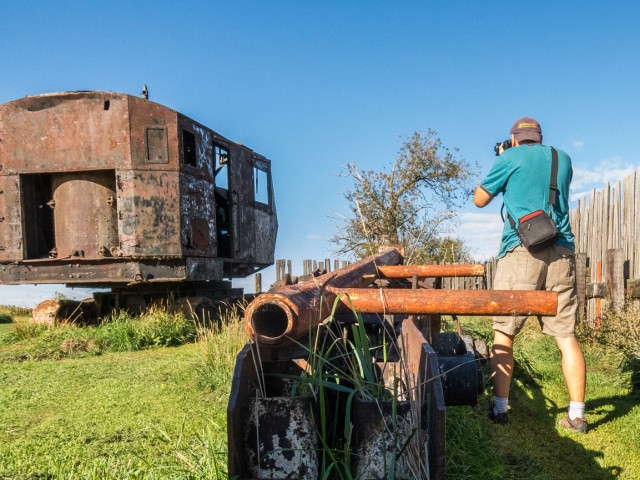
On the job!
Looking through Industrial Works records online, well, what we could find, we did manage to come across a picture of a machine under construction, that visually is almost identical to this one. Its the only one in photos that even has a passing resemblance. Again, this means there’s something rare here.
A dragline is best suited for digging moderate depth pits (relatively speaking) in light to medium packed soil, on fairly level ground. They dig from the top down, working backwards as they go. They are often used in surface coal mines.
Seen beside the dragline is a QuickWay (or Quick-Way) shovel mounted on a 1950-ish era REO (a rare truck make in Canada). It’s said this one may have once belonged to the City of Calgary and was used for street maintenance. A lack of outriggers (steadying devices) makes one wonder how they kept the whole thing from tipping over while working. The truck itself looks rather inadequate for the the load. The bucket, when stowed for transport, sure must have impeded the driver’s vision.
Also in this person’s collection was a good number of vintage (mostly 1910-1930s era) farm tractors, a few old cars, 1960s and 1970s era big rigs and other machinery. There are so many pieces in this collection which we’ll only just touch on. Highlights include a huge Minneapolis tractor from around the time of World War One, and an equally old International Harvester Mogul, which the owner fired up for us (it started just like that) and drove around the property. Many of the tractors seen, not just this one, run. I said he knew his machinery! All that stuff is for another report.
Admittedly there’s gaps in this report, which we hate. Sometimes however an author has no choice, either write about what you can, even if incomplete, or don’t do it at all. Of course, we’ll keep on it and should we know more, we’ll post an update. This old dragline intrigues us. Not like you come across a piece like it very often.
More coal mine history…
Diplomat Mine Site.
Stirling Mine – Commander Mine – Nacmine Alberta.
Tent Mountain was torn a new one.
If you wish more information on what you’ve seen here, by all means contact us!
Date: September, 2015.
Location: Near Brooks, AB.
Article references: Alberta mine records, Marlene and Tom Noga, Dave Wallwork via Pat Shannon, Fred Mellen, Bruce Burk.
A BIG thanks: Pat Shannon.
The equipment seen here is on private property. BIGDoer.com visited with permission.
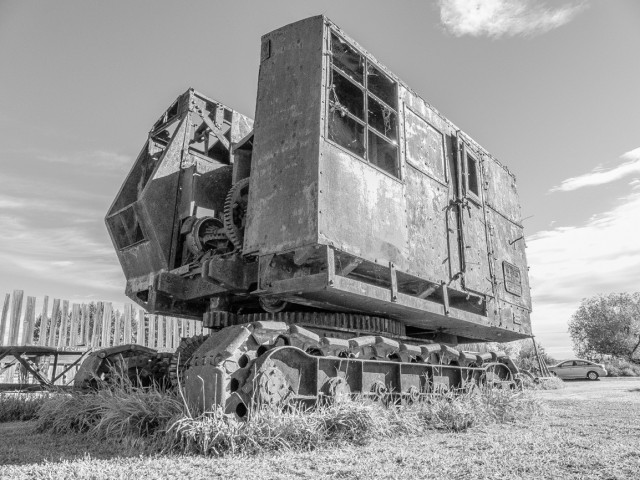
Our subject, an Industrial Works Dragline, is a beast.
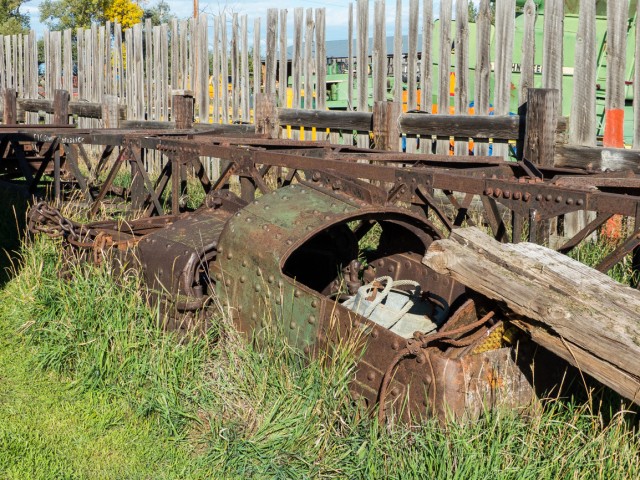
The dragline buckets, boom in behind.
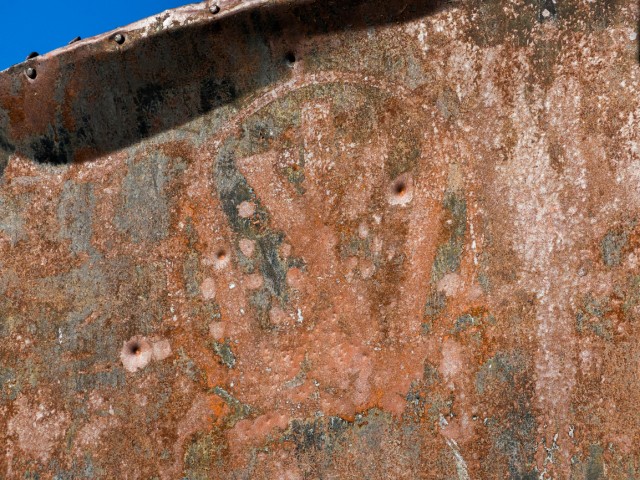
The faded Industrial Works logo can be seen.
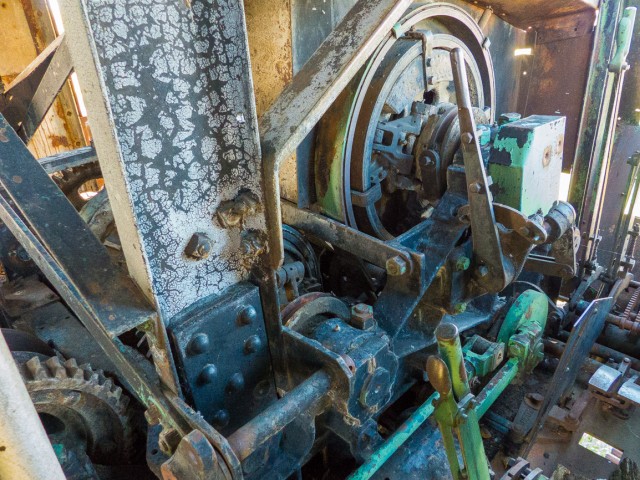
All this moving machinery within inches of the operator.
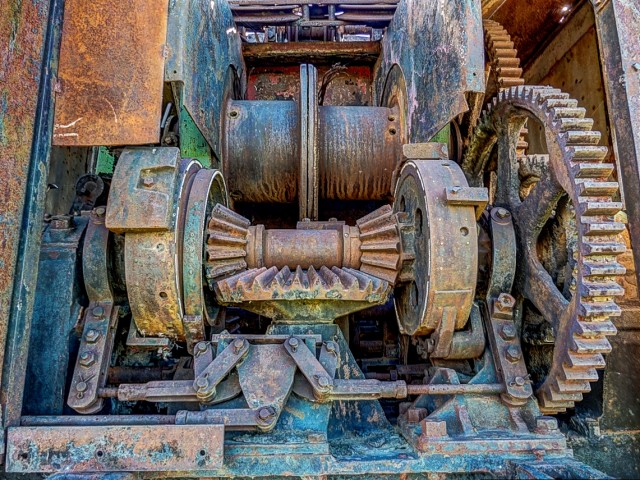
Gears, brakes, drums and control rods.
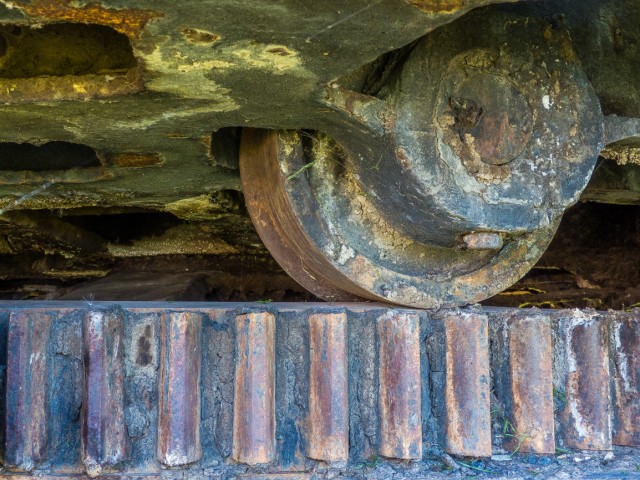
Undercarriage details.
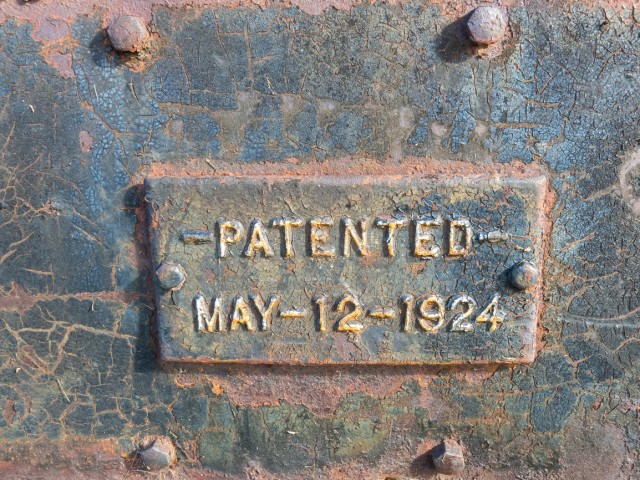
The patent plate.
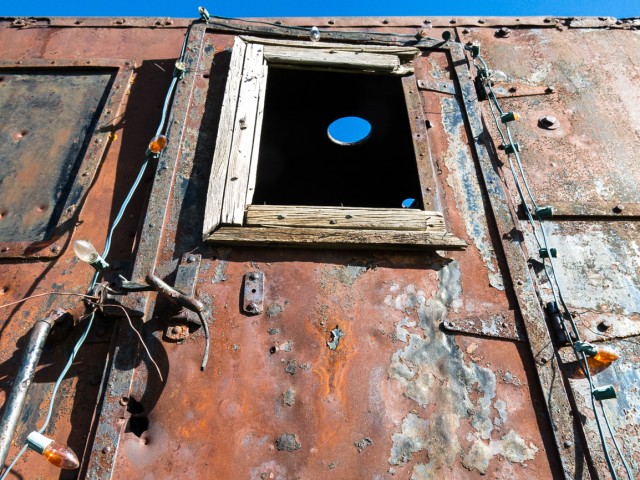
Christmas lights are from the previous owner.
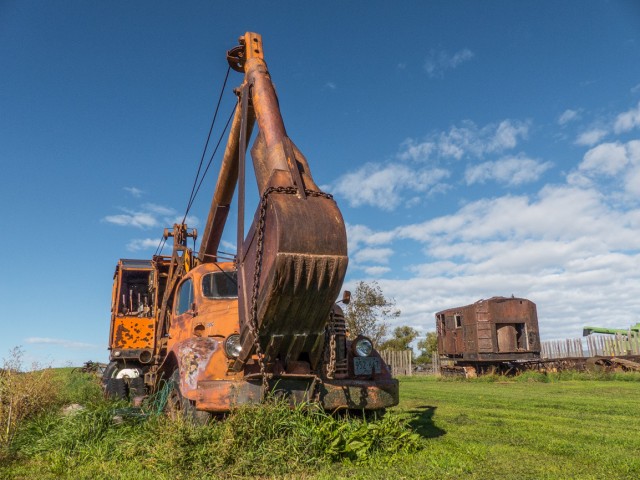
Nearby, an REO truck with a Quickway Shovel – the driver’s view is a bit obstructed!
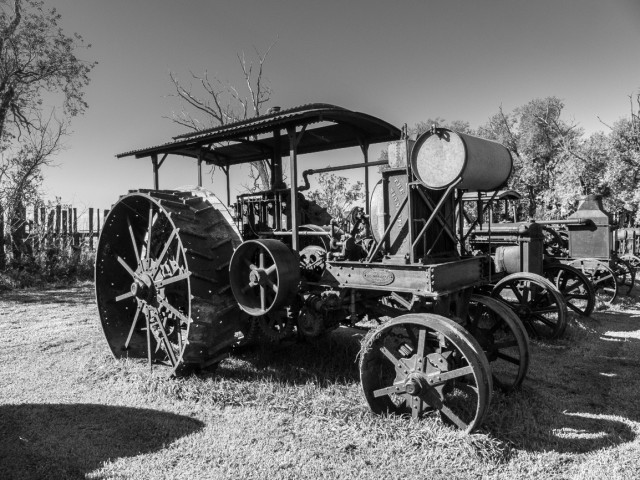
Also seen, a monster Minneapolis Tractor…
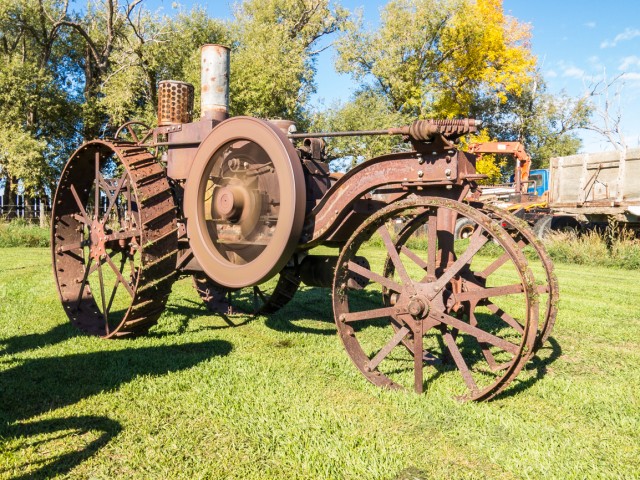
And this International Harvester Mogul Tractor. Watch that flywheel!

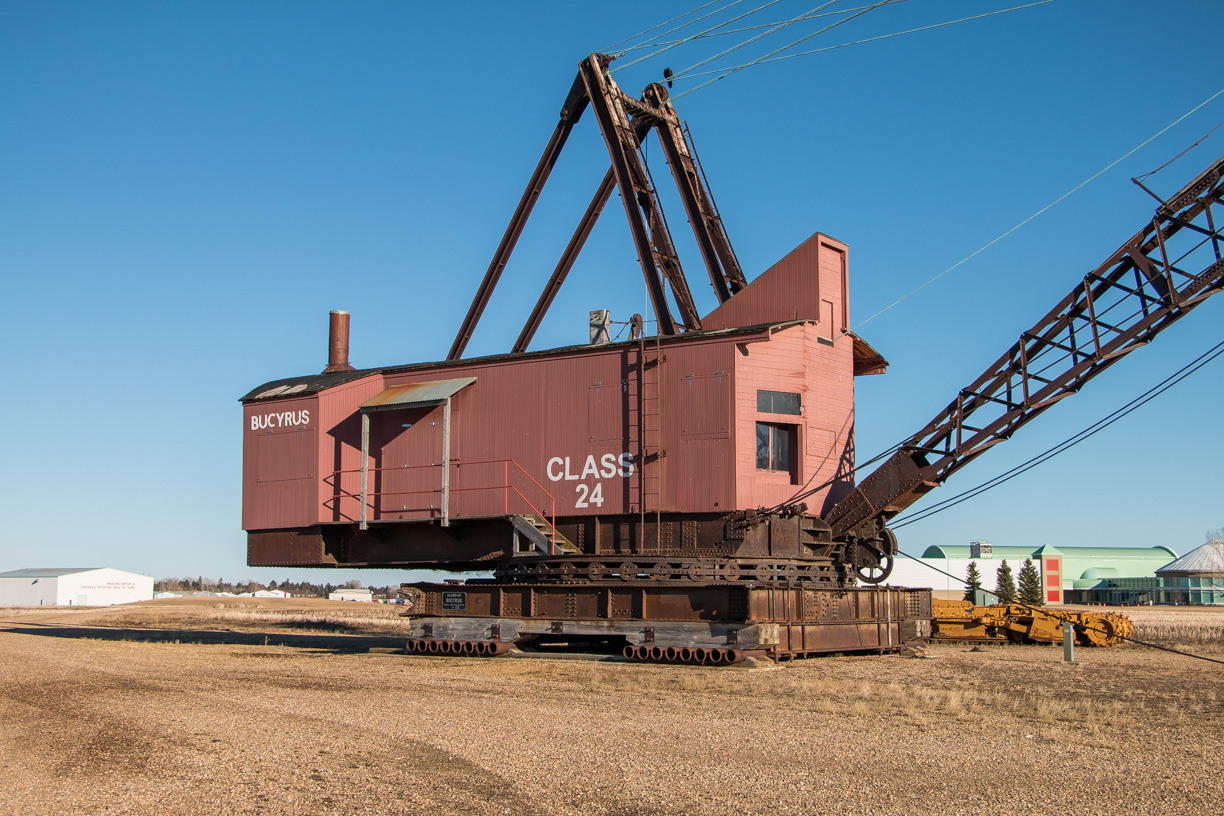
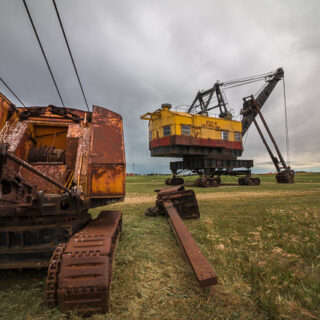
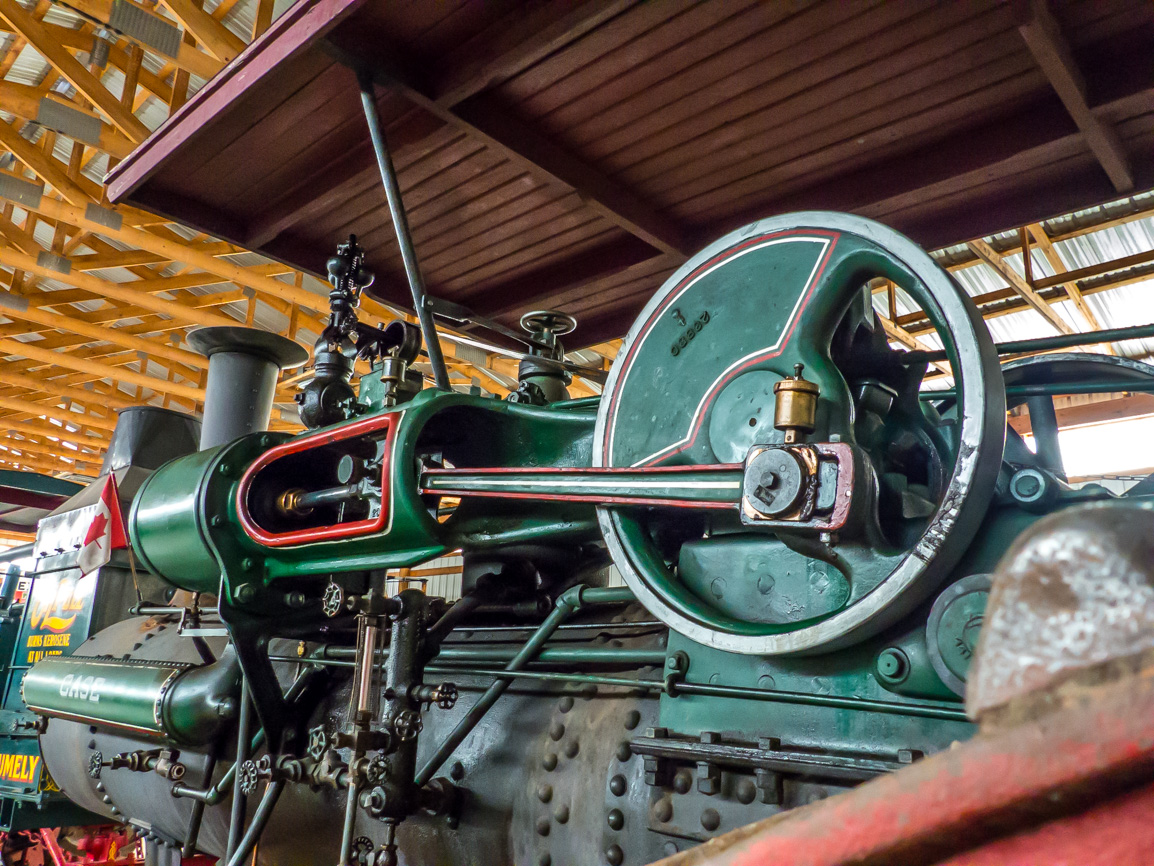
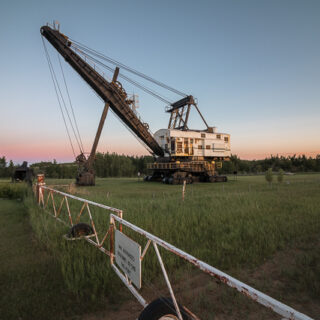
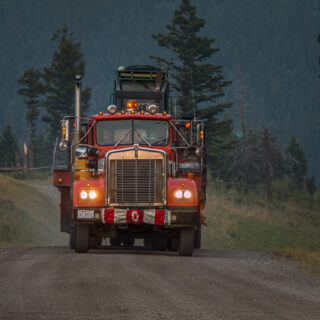
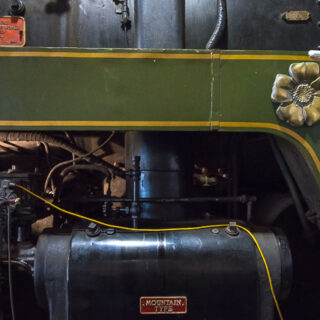
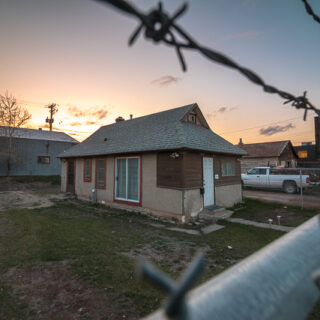
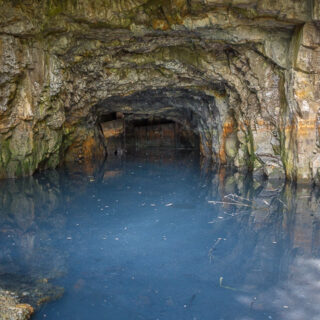
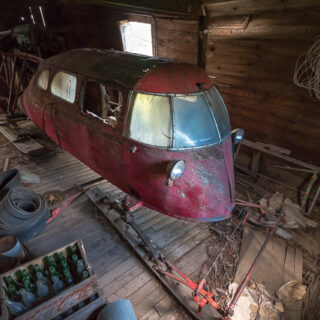
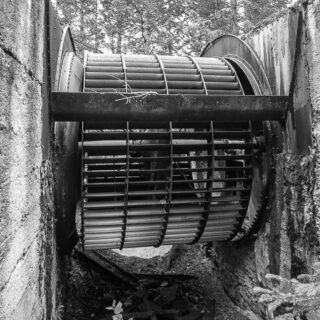
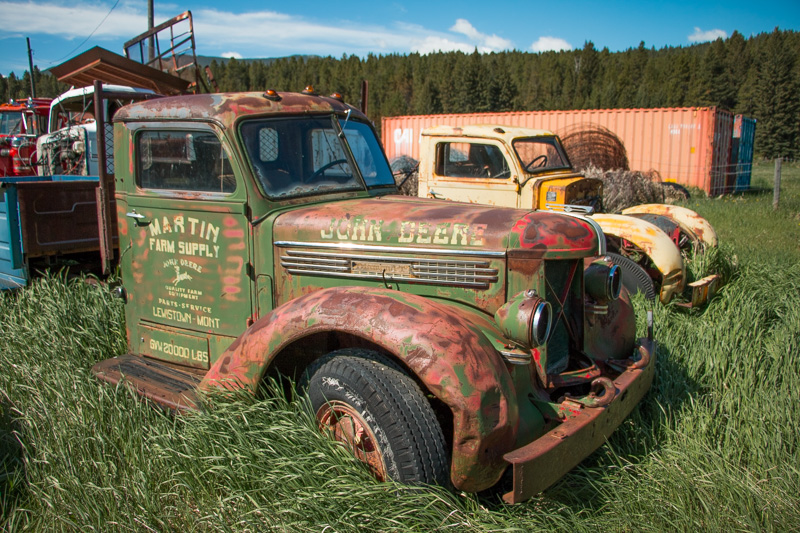
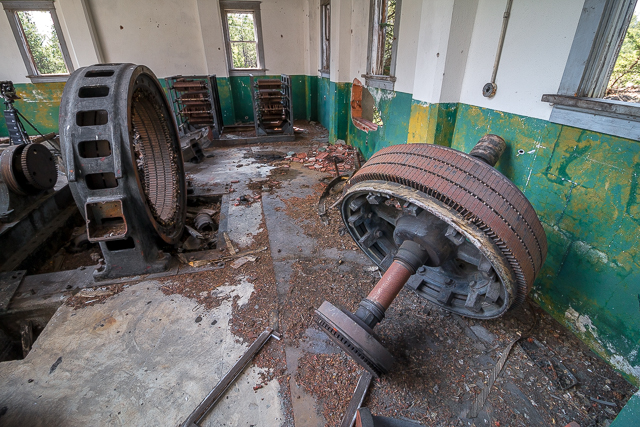
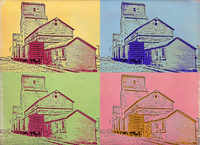






Neat stuff!
This fellow has the coolest toys ever.
Love this old machinery.
Bruce sure has some cool stuff!
Amazing piece of machinery!
Not just amazing, but super-duper fantastic amazing! Thanks for commenting!
Wow nice collection someone has!
Oh, it is. As Arnie said, we’ll be back…
Bow Island is my home town!
Awesome, now did you know about the dragline?
It’s pretty neat to watch a dragline in action. It’s a mechanical ballet.
I’ve seen a couple in action and you are right, it’s a heck of a dance.
That’s a machine I’d like to see in action!!
You and me both. What a brute!
Another great story Chris!
Thanks so much Connie, I find old machinery, big old machinery especially, inspiring.
Sweet! If he’s fixing it up, keep us posted on the progress. Looks like a heck of a project!
He’s an ambitious fellow. We’re planning to follow up with the owner as work hopefully progresses.
That looks like an awesome place!
Oh, it’s a machinery lover’s dream. We hope to return.
That dragline is a unique find!
We’ve never seen anything like it.
Awesome machinery! Wow, wonderful photos. Hope to see more.
I for one, want to return to the place.
(via Facebook)
It sure would have been cool to see that stuff in action back in the day.
Image the noise, and belching smoke and all those gears in motion. It’d be an amazing sight.